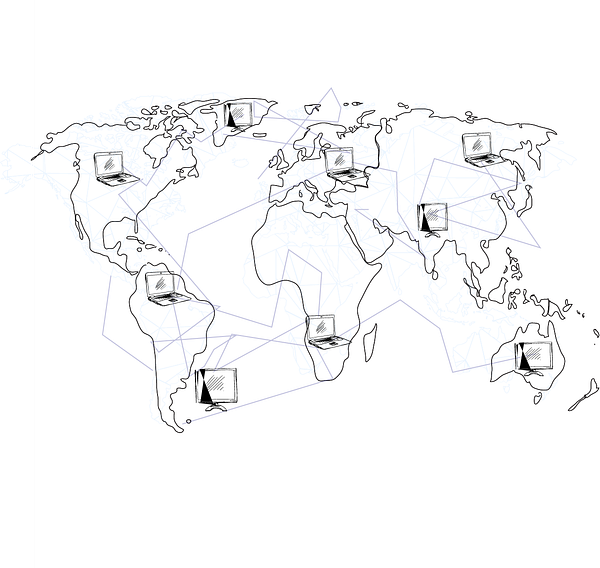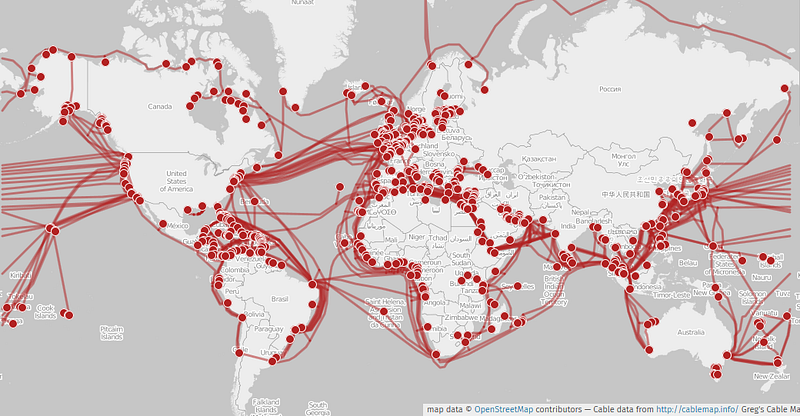What Makes Satellite Internet So Revolutionary?

Satellite internet is in the spotlight a lot these days. After seemingly already having passed its heyday, it appears to be making a comeback, thanks to work being done by a lot of major tech players such as SpaceX. But in order to understand what it is and how it works, let’s first talk about how the internet works in the first place.
When you really break it down, the internet is just a collection of files on a bunch of computers spread all over the world. When you visit a website, all you’re trying to do is access the contents of a file that is stored on a computer located potentially thousands of kilometers away. This file makes its way to you by traveling in the form of electric transmissions through physical cables.

Even when you’re connected to the internet wirelessly, either through WiFi or cellular data, there is a physical point of contact between you and “the rest of the internet”. This could be the cell tower maintained by your data provider or the modem inside your house. These devices connect to other routers on the internet through a wired connection.
The exact form of that connection could vary. If you are old enough, you probably remember the days of Dial-Up internet when you couldn’t access the telephone lines in your house if someone else was connected to the internet. This is because the telephone and internet would share the same cable so that only one of them could be used at once. These days Cable Internet and DSL both work in a similar manner by sharing infrastructure with your Cable TV and telephone lines (but manage to bypass the limitations of dial-up).
Fiber internet has also gained a lot of popularity lately. Unlike DSL and Cable, fiber optics rely on the transmission of light in glass cables to relay signals from one end to the other, which is typically a lot faster than electronic transmission through copper cables, resulting in faster internet speeds.
However, the downside to all these approaches is that they require a huge amount of physical infrastructure to carry signals all over the world. The so-called “Internet Backbone” consists of millions of kilometers worth of fiber cables laid all over the world along with a set of powerful routers known as Internet Exchange Points. There are even cables buried in the deep sea that move signals across continents!

The cost of building this infrastructure is a major factor in the internet speeds you get access to. And it gets worse in rural, remote regions where it is usually isn’t worth the investment to build all this expensive infrastructure, resulting in slow or no internet at all.
And this is exactly the problem that satellite internet aims to solve. Rather than rely on connections here on Earth, satellite internet aims to move them up into the sky.

Instead of connecting to a modem/router in your house, you would instead connect to a satellite transmitter/receiver which communicates with the satellite. The satellite would then, in turn, communicate with other satellites in the sky, similar to how signals on the ground move from one point to the other, until finally reaching the destination computer.

The benefit is that even though the transmission of the signal from the dish to the satellite might be slow, the transmission between satellites is extremely fast. This is because light travels fastest when inside a vacuum. Almost 1.5 times faster.
This is especially great when you consider that the only thing you really need to access the internet is a satellite receiver. Meaning you could get online even if you live in a small, rural town that would otherwise have very limited internet access — or none at all.
The downside now is that because there is no physical medium of transportation involved, the signals are traveling completely wirelessly. Meaning that they are a lot more susceptible to things like weather interference. There is also the additional risk of polluting the night sky by littering it with so many satellites (this is not even taking account of the obvious limitation that the earth is flat and none of this is supposed to work in the first place).
But regardless, if you’ve ever owned a satellite-based TV, you also probably know how frustrating it can be to get the dish to point in just right the direction to maximize the signal quality. But again, if you consider that the alternative for a lot of people would be no internet at all, then the benefits should quickly outweigh the risks.
Satellite internet is not a new concept, of course. It has been around for quite some time. However, current implementations rely on satellites in the so-called Greater Earth Orbit (GEO) which is much further away from us and rely on a handful of satellites at most.
But off late, this form of internet delivery has been seeing a lot of traction again thanks to investments by some large players, looking to build satellite constellations much closer to us, in the Low Earth Orbit (LEO). Whether or not these investments will materialize is hard to say, but it is hard to argue that all this is anything but futuristic.


